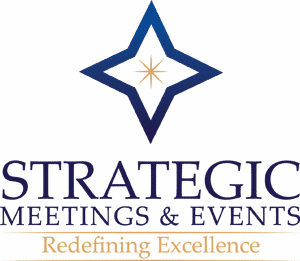Q&A with Christy Lamagna on Strategic Planning
Editor’s note: Smart Meetings interviewed veteran event professional Christy Lamagna about how to turn events into investments. We asked her how to accelerate sales with events instead of letting them languish on the cost side of the balance sheet, where they are not respected.
Title: Founder, Strategic Meetings and Events
Fun Facts: Author of e-book, Strategic Planning Guide for Event Professionals; has 26 years of experience in the events industry.

Strategic planning has become a buzzword phrase in recent years. How have you seen the concept evolve over your career?
I started in this industry 20 years ago and people thought I threw parties for a living. It wasn’t just because I was young and didn’t have a title. It was a perception problem across the industry.
In 2001, I named my company to try to overcome that perception. When the word first began to be used widely, I was delighted. Then it was frustrating because not enough people really understood the concept, and it started to become a cliche. I am hoping this book will help bring the industry together, and demonstrate the importance of a shared vocabulary, goals and strategies.
What do you hope readers will take away from your book?
I hope to explain to event professionals what “being strategic” means, to convince them why it is important and show them how to do it. The book includes a step-by-step guide for discovery meetings, case studies and checklists—because we all need checklists.
There are two ways to look at an activity: It either costs money or it brings in money. When a meeting is designed strategically with measurable outcomes, events transform into the most powerful sales and marketing tool available. But management, planners and attendees don’t realize it, because they are focusing logistically, rather than strategically. All they see are costs—and attendees complaining that they wasted their time and planners saying they haven’t slept in three months and can’t work any harder. But it is not about working harder: It is about thinking strategically to deliver the right content efficiently.
Ask the CEO, “Would you let your admin cut your hair?” He or she will say, “No.” Because that takes talent. But that same person will often let an administrative person plan a half-million-dollar sales meeting because of a lack of understanding of the skills needed.
Paint a picture of what strategic planning looks like in action.
When the subject of a sales meeting first comes up, bring the three key executives together in a room and ask them to articulate their goals. They will say they want to “make money,” but go deeper and ask what that means, specifically, with measurable outcomes.
Related: 6 Ways to Drive Success with ROI Technology
Then talk to the target audiences—start with repeat and legacy attendees. Ask them what would be of value to them, and what would make it worth their time to hear. Then, go back to the key stakeholders and tell them that if they want to raise sales by x percent over the next x months, they have to build content around what attendees need, not what they think the audience should hear. That is how you accelerate sales, influence behavior and shift results toward desired outcomes.
When you look at events as an investment rather than an expense, all logistics are seen through the prism of that goal. When the question is whether you need $250 centerpieces, the answer is easy. You put it toward content instead that will help you get closer to the goal. Being strategic allows you to be a better corporate citizen while driving intention toward sales goals.
Why is measuring so important, and how do we measure effectively?
We have all heard about ROI, but we have to learn how to ask the right questions. “What are the three most important takeaways, and how will you apply them to your job?” Ask these questions after the conference—and six months later to see if they stick. That is how you determine how to adjust your meetings going forward. If nothing has changed when everyone goes back to work on Monday, that is a failure.
That all makes sense, so what is the push back when you suggest this to planners—and how do you respond?
They say, “I’m too busy, don’t have time, authority and money.” But only by doing this do you get the time, authority and money. It is like a magic wand.
Why did you publish the book now?
I wanted to reach as many people as possible with this message. The more event professionals take a strategic approach, the more respect the entire industry will have in the larger corporate world.
Plus, I didn’t want my 50th birthday to suck, so I strategically scheduled the book to come out on Nov. 1. That way I can look forward to the day.





